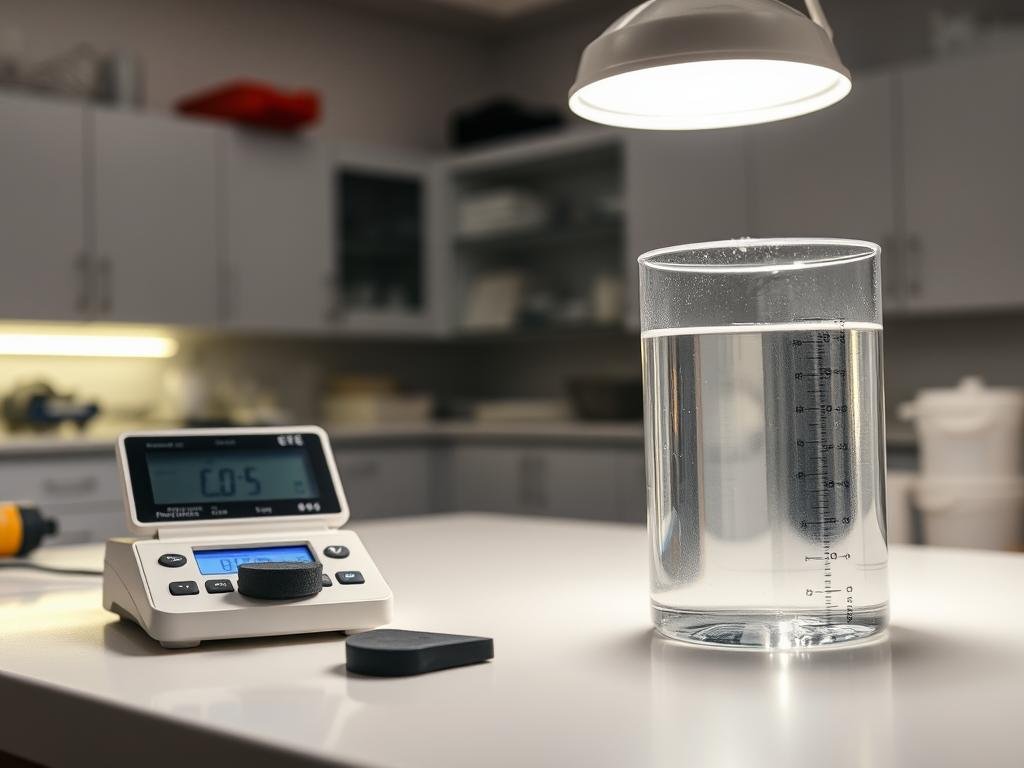The density of rubber is a crucial physical property that affects its performance in various applications, from automotive parts to industrial seals.
Understanding the differences in density between natural and synthetic rubber is essential for engineers and product designers to select the optimal material for specific requirements.
The density of rubber typically ranges from 0.92 g/cm³ to 2.02 g/cm³, with natural rubber generally having lower density than specialized synthetic rubbers.
This comprehensive guide will compare the densities of natural and synthetic rubber, explain measurement methods, and help you understand how density affects rubber performance in real-world applications.
Understanding Rubber Density and Its Importance
Understanding the density of rubber is essential for selecting the right material for specific uses. Rubber density is a critical property that affects the material’s performance in various applications.
What Is Rubber Density?
Rubber density is defined as the mass per unit volume of rubber material, typically measured in grams per cubic centimeter (g/cm³). It is a fundamental characteristic that influences the physical and mechanical properties of rubber. As noted by industry experts, “The density of rubber is a key factor in determining its suitability for different applications.”
Why Density Matters in Rubber Applications
The density of rubber directly impacts its physical characteristics, including strength, flexibility, weight, chemical resistance, and sealing effectiveness. Rubber sheet density typically ranges from 1.00 to 2.00 g/cm³, depending on the type of rubber, formulation, and additives used.
- Lower density rubbers (1.00-1.20 g/cm³) are more flexible and elastic, making them ideal for applications requiring good sealing properties.
- Medium density rubbers (1.21-1.50 g/cm³) offer a balance between flexibility and strength, suitable for automotive seals and industrial gasketing.
- Higher density rubbers (1.51-2.00 g/cm³) provide superior durability and resistance to compression, making them appropriate for heavy-duty industrial applications.
Understanding rubber density helps engineers optimize material selection for weight considerations, space constraints, and specific performance requirements. As the density affects how rubber responds to pressure, temperature changes, and chemical exposure, it directly influences product performance and longevity.
Natural Rubber Density Characteristics
Understanding the density characteristics of natural rubber is essential for selecting the right material for specific uses. Natural rubber (NR) has a density of approximately 1.34 g/cm³, which is relatively low compared to other materials.
Typical Density Range
Natural rubber typically has a density range of 0.92-1.10 g/cm³. This range makes it one of the lighter rubber materials available for industrial applications. The relatively low density contributes to its exceptional elasticity and flexibility.
Physical Properties
The physical properties of natural rubber are closely related to its density. Its molecular structure creates a unique combination of low density and high tensile strength, approximately 160 kg/cm², with elongation capabilities of up to 410%. This balance of properties makes natural rubber suitable for applications where material weight is a consideration.

Advantages and Limitations
Natural rubber’s density characteristics provide several advantages, including good abrasion resistance and tear strength. However, its density limitations become apparent in high-temperature environments (above 70°C) and when exposed to oils and solvents, where the material may degrade or swell.
- The low density of natural rubber allows for excellent recovery after compression or stretching.
- Its density can be modified through compounding with various fillers and additives.
- Despite its advantages, natural rubber has poor resistance to oil and high temperatures.
Overall, the density of natural rubber is a critical factor in determining its suitability for various applications.
Synthetic Rubber Density Comparison
Synthetic rubber density varies widely across different types, offering a range of performance characteristics. This variability allows for the selection of the most appropriate material for specific applications, based on factors such as chemical resistance, temperature resistance, and mechanical strength.
Common Synthetic Rubber Types and Their Densities
Synthetic rubbers exhibit a wider range of densities compared to natural rubber, typically between 1.00 and 2.02 g/cm³. This range enables the tailoring of performance characteristics for specific applications.
Nitrile Rubber (NBR) Density Profile
Nitrile rubber (NBR) has a density of 1.22 g/cm³, offering excellent oil resistance and good mechanical strength. Its abrasion resistance and compression set make it suitable for sealing applications.
EPDM, Neoprene, and Silicone Rubber Densities
EPDM rubber has a density of 1.17 g/cm³, providing good resistance to weathering and polar chemicals. Neoprene (CR) has a density of 1.45 g/cm³, with balanced mechanical properties and good chemical resistance. Silicone rubber (VMQ) has a density of 1.35 g/cm³, offering exceptional temperature resistance.
High-Density Synthetic Rubbers: Viton and Fluorosilicone
Viton (FKM) has a density of 2.02 g/cm³, with exceptional compression set at high temperatures and superior chemical resistance. Fluorosilicone rubbers also exhibit high densities, correlating with their enhanced resistance to aggressive chemicals.
| Synthetic Rubber Type | Density (g/cm³) | Key Properties |
|---|---|---|
| Nitrile Rubber (NBR) | 1.22 | Excellent oil resistance, good mechanical strength |
| EPDM | 1.17 | Good resistance to weathering, steam, and polar chemicals |
| Neoprene (CR) | 1.45 | Balanced mechanical properties, good chemical resistance |
| Silicone Rubber (VMQ) | 1.35 | Exceptional temperature resistance (-70°C to 200°C) |
| Viton (FKM) | 2.02 | Superior chemical resistance, high-temperature performance |
How to Measure the Density of Rubber
Accurate density measurement is essential for quality control in rubber manufacturing. To achieve this, two primary methods are employed: the water displacement method and the pycnometer method.
Water Displacement Method
The water displacement method, based on Archimedes’ principle, involves measuring the sample weight in air (W1) and then submerged in water (W2). The density is calculated using the formula: Density (g/cm³) = W1/(W1 – W2). This method is straightforward and effective for many rubber samples.

Pycnometer Method
The pycnometer method offers higher precision, especially for smaller samples. It involves weighing the empty pycnometer (Wp), filling it with water and weighing again (Ww), then inserting the sample, filling with water, and weighing (Ws). The density is calculated as: Density (g/cm³) = Sample weight in air/((Ww + Sample weight) – Ws).
Industry Standards for Density Measurement
Industry standards such as ASTM D297 and ISO2781 provide guidelines for measuring rubber density, ensuring consistent results. These standards specify sample preparation, temperature conditions, and measurement techniques to minimize variables affecting density readings.
Factors Influencing Rubber Density
Understanding the factors that influence rubber density is essential for selecting the right material for specific applications. The density of rubber is not a fixed property; rather, it is influenced by various factors that can be adjusted during the manufacturing process to achieve the desired characteristics.
Filler Content and Types
Filler content is one of the key factors influencing rubber density. Common fillers such as carbon black, silica, and calcium carbonate increase density while enhancing specific properties like mechanical strength, abrasion resistance, and durability. The type and amount of fillers used can significantly alter rubber density.
Additives and Plasticizers
Additives and plasticizers play a crucial role in modifying rubber density. Plasticizers typically decrease density while improving flexibility and processability. However, they may lower overall strength. The choice of additives and their proportions is critical in achieving the desired balance between density and other properties.
Manufacturing and Curing Processes
The manufacturing process significantly impacts final rubber density. Compression molding typically produces higher density products compared to extrusion or injection molding due to differences in material compaction. Curing processes and vulcanization parameters also influence molecular cross-linking density, affecting the overall physical density of the rubber compound.
The degree of cross-linking during vulcanization can increase rubber density by creating a tighter molecular structure. Extrusion and calendering processes may result in slightly lower density products compared to compression molding.
Conclusion: Selecting the Right Rubber Density for Your Application
The appropriate rubber density ensures the optimal functioning of rubber materials in diverse applications. When choosing between natural and synthetic rubber, consider factors such as operating environment, chemical exposure, and mechanical requirements to ensure product quality and longevity.
For automotive and industrial applications, medium-density synthetic rubbers like NBR often provide the best balance of oil resistance and mechanical strength. Custom rubber formulations, such as those offered by Julong Rubber, allow for tailored density specifications to meet unique application requirements.
To get free consultation on rubber material selection based on density requirements, contact Julong Rubber’s technical team. Understanding the trade-offs between density, performance, and cost enables engineers to make informed decisions when specifying rubber materials for new product development or existing product improvement, ensuring optimal performance in mass production.
